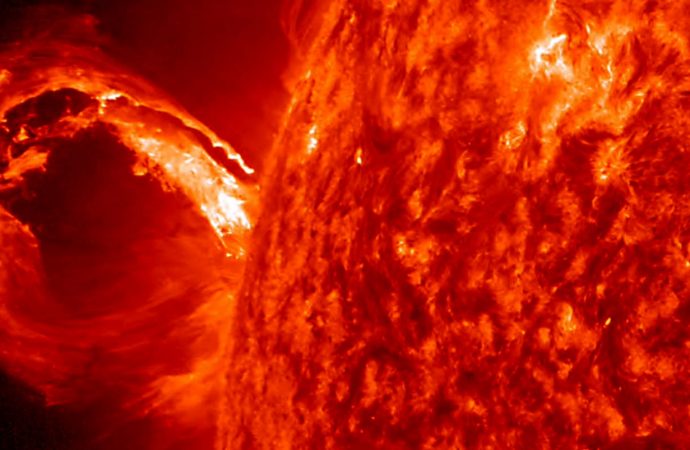The latest 11-year cycle of the sun is almost over and scientists have just released predictions for the next one.
Source: The Washington Post
Based on the number of sunspots that formed, scientists considered the last solar cycle, No. 24, “weak.” They predict that the upcoming cycle, No. 25, may follow suit, but there are a range of views. Some scientists say the latest data point to a stronger cycle.
The solar cycle forecast was made public at the annual Space Weather Workshop last week, hosted by the National Oceanic and Atmospheric Administration’s Space Weather Prediction Center.
Lisa Upton, a solar physicist with Space Systems Research Corporation and co-chair of the panel issuing predictions, said Cycle 25 should begin between mid-2019 and late 2020 and that it should reach its maximum between 2023 and 2026, when between 95 and 130 sunspots are projected. Average is between 140 and 220 sunspots.
Cycle 24 peaked in April 2014 with 116 sunspots. Should Cycle 25 actually reach the predicted values, that would stem the trend of the past few cycles that showed a continued decline.

Scott McIntosh, a physicist at the National Center for Atmospheric Research, says the latest information would suggest solar cycle 25 may actually be stronger than 24. “The present Geomagnetic data indicate a higher SC25,” he tweeted.
The decline in sunspot activity through cycle 24 was worrisome to some space weather scientists in that it suggested a return to a lengthy “solar drought,” reminiscent of the Maunder Minimum period of 1645-1715. Records show the sun was essentially spotless for this lengthy period, coinciding with the “Little Ice Age” in Europe and tickling the interest of scientists to wonder whether there is a cause-and-effect relationship between solar behavior and Earth’s climate.
The prediction panel, in future work, will attempt to better understand the strength, timing and location of sunspot formation across the sun’s hemispheres and the likelihood of solar flares and coronal mass ejections. These are blasts of charged particles off the sun which can disrupt satellite and radio communications, and even power grids in extreme cases.
Frank Hill, a physicist at the National Solar Observatory, detected measurements heralding the start of Cycle 25 about a year ago. The small sample of data available hampers the confidence of prediction, but he estimates Cycle 25 will commence around October.
The prediction of solar cycle behavior is very difficult. “We are not really ‘there’ on the underlying physics of the problem. It’s a bit like pin the tail on the donkey,” McIntosh said.
Solar scientists are most concerned about a major eruption from the sun, which could cause substantial damage to electronic communication systems and power grids. History suggests such extreme events are possible.
During the “Carrington Event” in 1859, for example, the northern lights were seen as far south as Cuba and Hawaii, according to historical accounts. The solar eruption “caused global telegraph lines to spark, setting fire to some telegraph offices,” NASA wrote. A similar event today would have the potential to cause serious damage to satellite communications and power infrastructure.
During weak cycles, such events are less likely but still possible.
“While we are not predicting a particularly active Solar Cycle 25, violent eruptions from the sun can occur at any time,” Doug Biesecker, a solar physicist at NOAA’s Space Weather Prediction Center, said in a statement.
In any cycle, strong or weak, the strongest solar storms are most likely at the solar maximum, which is projected between 2023 and 2026 in Cycle 25. Pete Riley, a scientist with Predictive Science, said at the recent workshop that the probability of a “Carrington Event” during solar minimum is about 1.4 percent, whereas during solar maximum it balloons to about 28 percent.
The Cycle 25 prediction panel will continue its work and periodically update its forecasts.

































Leave a Comment
You must be logged in to post a comment.